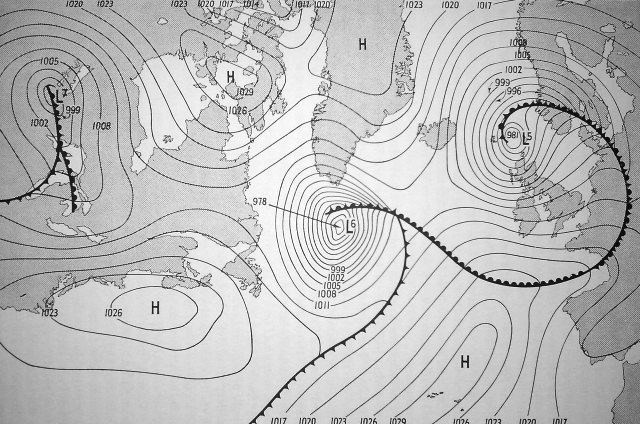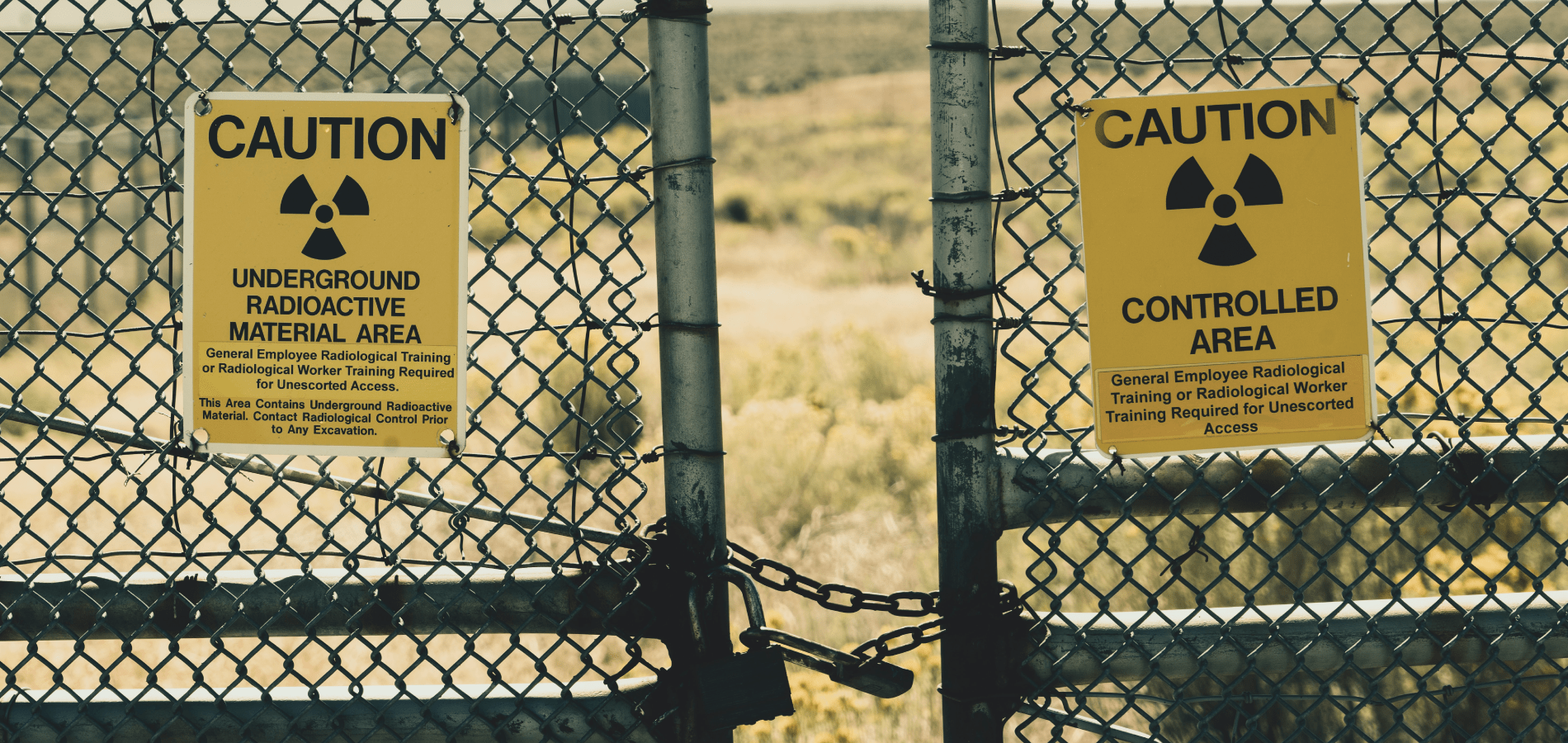A major turning point in World War II and, at that time, the largest naval, air, and land military operation in history, D-Day marked the beginning of the end for Nazi Germany. A massive collaboration between the United States, Canada, the United Kingdom, and other Allied nations, the storming of the beaches of Normandy required years of careful planning, hundreds of thousands of pieces of equipment and artillery, and immeasurable bravery. In this month’s Secrets of the Serial Set edition, we’ll use the U.S. Congressional Serial Set to examine what happened on that fateful June 6, 1944.
Nazi Control in Europe
Germany, led by Adolf Hitler, invaded Poland on September 1, 1939.[1]“Events leading up to World War II, chronological history, 1931-44, prepared by Legislative Reference Service.” U.S. Congressional Serial Set, , 1944, pp. I-422. HeinOnline, … Continue reading Following the invasion, Britain and France declared war on Germany.[2]“Events leading up to World War II, chronological history, 1931-44, prepared by Legislative Reference Service.” U.S. Congressional Serial Set, , 1944, pp. I-422. HeinOnline, … Continue reading However, by May 1940, Nazi Germany had invaded and taken control of northwestern France, as well as Belgium, Denmark, Holland, and Norway. The United States was brought into the war in 1941, following the Japanese bombing of Pearl Harbor and Germany’s war declaration on America. By 1942, it was clear that a major invasion by the United States and the Allied nations was required to bring the war to an end. President Franklin D. Roosevelt and U.K. Prime Minister Winston Churchill began to work together to plan a major invasion across the English Channel.
However, it wouldn’t be easy. Anticipating an attack in northern France, Hitler assigned Erwin Rommel to create a defense operation and finalize the Atlantic Wall,[3]Gordon A. Harrison. Cross-Channel Attack (1950). This document can be found in HeinOnline’s Military and Government database. which was a 2,400-mile line consisting of 6.5 million landmines, thousands of concrete bunkers, and other obstacles designed to protect German troops against an invasion.

Planning and Testing
At the Tehran Conference[4]“Foreign relations of United States, Conferences at Cairo and Tehran.” U.S. Congressional Serial Set, , 1961, pp. I-932. HeinOnline, https://heinonline.org/HOL/P?h=hein.usccsset/usconset37108&i=549. This document can … Continue reading held in August 1943, Allied leaders decided that this invasion, which was called Operation Overlord, would take place around May 1, 1944.[5]“Foreign relations of United States, Conferences at Cairo and Tehran.” U.S. Congressional Serial Set, , 1961, pp. I-932. HeinOnline, https://heinonline.org/HOL/P?h=hein.usccsset/usconset37108&i=613. This document can … Continue reading General Dwight D. Eisenhower—who would later be the 34th president of the United States—was appointed commander of Operation Overlord, also known as D-Day. Leading up to the attack, Allied troops carried out an extensive deception operation to make the Germans think that the target of the attack would be Pas-de-Calais,[6]“Domestic stability, national defense, and World War II, legislative and executive background.” U.S. Congressional Serial Set, , 1946, pp. I-164. HeinOnline, … Continue reading another region of northern France. Additionally, two months before D-Day, which was then scheduled for June 5, Allied troops staged a dress rehearsal of the attack, called Exercise Tiger,[7]James F. III; William S. Hein Co. Bailey, Inc. Immigration and Nationality Act. Legislative Histories and Related Documents (1985). This document can be found in HeinOnline’s U.S. Federal Legislative History Library. at a deserted English beach. However, German troops learned about this mock invasion and sent E-boats to attack, killing more than 700 U.S. troops.
Inclement weather during the days leading up to June 5 caused the date to be delayed. Cleared skies in the early morning of June 6 allowed the invasion to proceed. Eisenhower told his men: “You are about to embark upon the Great Crusade, toward which we have striven these many months. The eyes of the world are upon you.”

Destruction and Defeats
Just after midnight on June 6, Allied troops took to the skies and began to destroy bridges and railroads behind enemy lines to delay the sending of reinforcements. The invasion of sea and land began around 6:30 a.m., with troops divided among five sections of beachfront, codenamed “Utah,” “Omaha,” “Gold,” “Juno,” and “Sword.”[8]“Consideration of H.R. 4435 authorize appropriations for fiscal 2015 military activities of Department of Defense, military constuction prescribe military personnel strengths for fiscal year; Consideration of H.R. 3361 reform authorities of … Continue reading Omaha Beach saw the worst of the fighting, with more than 2,400 American troops[9]H. Doc. 115-44 – THE PROCEEDINGS OF THE 117TH NATIONAL CONVENTION OF THE VETERANS OF FOREIGN WARS OF THE UNITED STATES. Washington, U.S. G.P.O. HeinOnline, https://heinonline.org/HOL/P?h=hein.congrecdocs/crptdocsxaaaf0001&i=235. This … Continue reading killed, wounded, or missing by the end of that day.
In total, more than 150,000 Allied troops had invaded Normandy by the end of June 6, with more than 4,000 Allies killed[10]H. Doc. 115-44 – THE PROCEEDINGS OF THE 117TH NATIONAL CONVENTION OF THE VETERANS OF FOREIGN WARS OF THE UNITED STATES. Washington, U.S. G.P.O. HeinOnline, https://heinonline.org/HOL/P?h=hein.congrecdocs/crptdocsxaaaf0001&i=235. This … Continue reading and thousand others wounded or unaccounted for. However, the mission was a success—by June 11, all five beaches had been secured by the Allies. The Germans suffered from the surprise of the invasion, with Rommel on leave at the time. Hitler was convinced that the attack was another ploy, so he hesitated to send additional troops and equipment. In total, somewhere between 4,000 and 9,000 German troops were killed, wounded, or missing by the end of D-Day.

The Aftermath
By the end of June 1944, Allied troops had seized Cherbourg,[11]“Domestic stability, national defense, World War II, legislative and executive background, 1933-44.” U.S. Congressional Serial Set, , 1944, pp. I-110. HeinOnline, … Continue reading an essential French port, and had more than 800,000 troops within Normandy. By the end of August, the Allies had seized Paris, and Germany was pushed out of northwestern France. From there, the Allies would storm Germany from the west, with Soviet troops entering from the east. And less than a year later, on April 30, 1945, Hitler committed suicide. Nazi Germany unconditionally surrendered on May 8, 1945. Later that year, the U.S. would drop two atomic bombs on Japan, causing catastrophic damage and casualties, leading to Japan’s surrender and the close of World War II.
Unlocking the Secrets of the Serial Set
Secrets of the Serial Set is an exciting and informative blog series from HeinOnline dedicated to unveiling the wealth of American history found in the United States Congressional Serial Set. Documents from additional HeinOnline databases have been incorporated to supplement research materials for non-U.S. related events discussed.
HeinOnline Sources[+]
| ↑1 | “Events leading up to World War II, chronological history, 1931-44, prepared by Legislative Reference Service.” U.S. Congressional Serial Set, , 1944, pp. I-422. HeinOnline, https://heinonline.org/HOL/P?h=hein.usccsset/usconset23087&i=214. This document can be found in HeinOnline’s U.S. Congressional Serial Set. |
|---|---|
| ↑2 | “Events leading up to World War II, chronological history, 1931-44, prepared by Legislative Reference Service.” U.S. Congressional Serial Set, , 1944, pp. I-422. HeinOnline, https://heinonline.org/HOL/P?h=hein.usccsset/usconset23087&i=217. This document can be found in HeinOnline’s U.S. Congressional Serial Set. |
| ↑3 | Gordon A. Harrison. Cross-Channel Attack (1950). This document can be found in HeinOnline’s Military and Government database. |
| ↑4 | “Foreign relations of United States, Conferences at Cairo and Tehran.” U.S. Congressional Serial Set, , 1961, pp. I-932. HeinOnline, https://heinonline.org/HOL/P?h=hein.usccsset/usconset37108&i=549. This document can be found in HeinOnline’s U.S. Congressional Serial Set. |
| ↑5 | “Foreign relations of United States, Conferences at Cairo and Tehran.” U.S. Congressional Serial Set, , 1961, pp. I-932. HeinOnline, https://heinonline.org/HOL/P?h=hein.usccsset/usconset37108&i=613. This document can be found in HeinOnline’s U.S. Congressional Serial Set. |
| ↑6 | “Domestic stability, national defense, and World War II, legislative and executive background.” U.S. Congressional Serial Set, , 1946, pp. I-164. HeinOnline, https://heinonline.org/HOL/P?h=hein.usccsset/usconset23013&i=1056. This document can be found in HeinOnline’s U.S. Congressional Serial Set. |
| ↑7 | James F. III; William S. Hein Co. Bailey, Inc. Immigration and Nationality Act. Legislative Histories and Related Documents (1985). This document can be found in HeinOnline’s U.S. Federal Legislative History Library. |
| ↑8 | “Consideration of H.R. 4435 authorize appropriations for fiscal 2015 military activities of Department of Defense, military constuction prescribe military personnel strengths for fiscal year; Consideration of H.R. 3361 reform authorities of Federal Government to require production of certain business records, conduct eletronic surveillance, use pen registers and trap and trace devices, use other forms of information gatheing foreign intelligence, counterterrorism, criminal purposes .” Congressional Serial Set, , 2014, pp. 1-174. HeinOnline, https://heinonline.org/HOL/P?h=hein.usccsset/usconset60078&i=198. This document can be found in HeinOnline’s U.S. Congressional Serial Set. |
| ↑9, ↑10 | H. Doc. 115-44 – THE PROCEEDINGS OF THE 117TH NATIONAL CONVENTION OF THE VETERANS OF FOREIGN WARS OF THE UNITED STATES. Washington, U.S. G.P.O. HeinOnline, https://heinonline.org/HOL/P?h=hein.congrecdocs/crptdocsxaaaf0001&i=235. This document can be found in HeinOnline’s U.S. Congressional Serial Set. |
| ↑11 | “Domestic stability, national defense, World War II, legislative and executive background, 1933-44.” U.S. Congressional Serial Set, , 1944, pp. I-110. HeinOnline, https://heinonline.org/HOL/P?h=hein.usccsset/usconset23083&i=737. This document can be found in HeinOnline’s U.S. Congressional Serial Set. |



